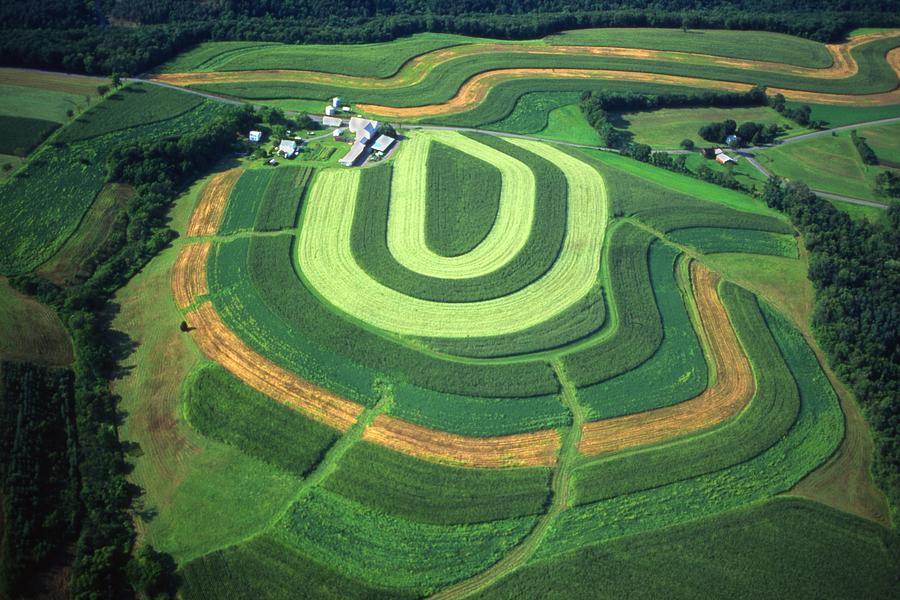
contour plowing.jpg
Contour Plowing
Definition:
Contour plowing is an agricultural practice that involves plowing parallel to the contour lines of the land, rather than in straight rows up and down slopes, to reduce soil erosion and promote soil conservation.
Informational/Educational Words:
Soil erosion prevention, slope gradient, water runoff, soil conservation, erosion control, agricultural practices, land management.
Fall off the barn roof and busted your keister? Life on the farm or ranch can be tough on the bum. Need a break? Laugh it off at FarmerCowboy.com, the #1 farm humor site. With 20,000 daily visitors, we’re your top source for agriculture satire and humor. Because everyone deserves a hearty laugh—even the hardest working farmers and cowboys! Join us and turn those long days into fun tales at FarmerCowboy.com.
Academic and Helpful Content:
Contour plowing is a time-tested soil conservation technique used by farmers to minimize soil erosion and preserve soil fertility on sloping terrain. By following the natural contours of the land, contour plowing helps reduce the speed of water runoff, trap sediment, and promote water infiltration into the soil, thus mitigating erosion risks and maintaining soil health. Understanding the principles and benefits of contour plowing is essential for promoting sustainable agriculture and protecting natural resources in erosion-prone landscapes.
Principles of Contour Plowing:
Contour plowing follows the natural contours of the land, with furrows and ridges running perpendicular to the slope gradient. By plowing across the slope rather than up and down, contour plowing helps slow down water runoff and reduce soil erosion by allowing water to infiltrate into the soil and minimizing soil disturbance. Contour plowing is particularly effective on sloping terrain where conventional plowing methods can lead to significant soil erosion and loss of soil fertility.
Benefits of Contour Plowing:
Contour plowing offers numerous benefits for soil conservation, water management, and crop production. By reducing soil erosion, contour plowing helps preserve soil structure, organic matter, and nutrient content, promoting soil health and fertility over time. Additionally, contour plowing helps minimize sedimentation in water bodies, protect water quality, and maintain ecosystem integrity in agricultural watersheds. Furthermore, contour plowing enhances crop yields, improves moisture retention, and minimizes soil compaction, contributing to sustainable agriculture and food security.
Implementation of Contour Plowing:
Implementing contour plowing involves assessing the slope gradient of the land, identifying contour lines, and determining the direction of plowing to follow the natural contours of the landscape. Farmers may use GPS technology, topographic maps, or visual observation to identify contour lines and plan the layout of furrows and ridges accordingly. It is essential to adjust the spacing and depth of furrows based on soil type, slope gradient, and crop requirements to optimize erosion control and soil conservation benefits.
Integration with Other Conservation Practices:
Contour plowing can be integrated with other soil conservation practices to enhance erosion control and promote sustainable land management. Companion practices such as cover cropping, conservation tillage, grassed waterways, and terracing complement contour plowing by providing additional soil protection, reducing runoff velocity, and improving water infiltration. By adopting an integrated approach to soil conservation, farmers can maximize the effectiveness of erosion control measures and minimize environmental impacts on agricultural landscapes.
Adaptive Management and Monitoring:
Adaptive management and monitoring are essential components of successful contour plowing programs. Farmers should regularly monitor soil erosion rates, water runoff patterns, and crop performance to assess the effectiveness of contour plowing and make adjustments as needed. Implementing erosion control structures, such as grassed waterways and sediment traps, can help mitigate erosion risks in areas with high runoff potential or concentrated flow paths. By incorporating feedback from monitoring efforts, farmers can refine contour plowing practices and optimize soil conservation outcomes over time.
Education and Outreach:
Educating farmers, landowners, and agricultural stakeholders about the benefits and techniques of contour plowing is crucial for promoting adoption and implementation at the community level. Extension services, agricultural agencies, and conservation organizations can provide training, technical assistance, and outreach programs to support farmers in adopting contour plowing practices and integrating soil conservation into their farming systems. By raising awareness and building capacity, stakeholders can empower farmers to implement sustainable land management practices and protect natural resources for future generations.
Policy Support and Incentives:
Policy support and incentives play a vital role in promoting contour plowing and other soil conservation practices at the regional and national levels. Governments can provide financial incentives, cost-share programs, and technical assistance to encourage farmers to adopt contour plowing and other conservation measures. Additionally, regulations, zoning ordinances, and conservation programs can promote sustainable land management practices, protect critical habitats, and safeguard soil and water resources from erosion and degradation. By aligning policy frameworks with conservation goals, policymakers can create an enabling environment for sustainable agriculture and soil stewardship.
In conclusion, contour plowing is a valuable soil conservation practice that offers numerous benefits for erosion control, water management, and crop production in sloping landscapes. By following the natural contours of the land, farmers can minimize soil erosion, preserve soil fertility, and promote sustainable agriculture for future generations. Through education, outreach, policy support, and adaptive management, stakeholders can promote the adoption of contour plowing and other soil conservation practices, safeguarding soil and water resources and fostering resilience in agricultural landscapes.
Originally posted 2014-06-28 15:15:56.
Originally posted 2024-07-01 05:10:12.
Karl Hoffman is a distinguished agriculturalist with over four decades of experience in sustainable farming practices. He holds a Ph.D. in Agronomy from Cornell University and has made significant contributions as a professor at Iowa State University. Hoffman’s groundbreaking research on integrated pest management and soil health has revolutionized modern agriculture. As a respected farm journalist, his column “Field Notes with Karl Hoffman” and his blog “The Modern Farmer” provide insightful, practical advice to a global audience. Hoffman’s work with the USDA and the United Nations FAO has enhanced food security worldwide. His awards include the USDA’s Distinguished Service Award and the World Food Prize, reflecting his profound impact on agriculture and sustainability.






